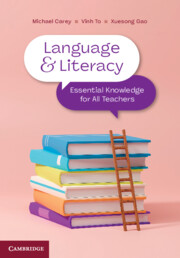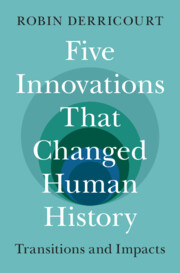Refine search
Actions for selected content:
178 results
Chapter 7 - Orality and Modern African Writing
- from Part I - Decolonization Currents
-
-
- Book:
- African Literature in Transition
- Published online:
- 07 November 2025
- Print publication:
- 20 November 2025, pp 140-154
-
- Chapter
- Export citation
Chapter 2 - Responding to Orality in African Literature
- from Part I - Sources
-
-
- Book:
- African Literature in Transition
- Published online:
- 31 October 2025
- Print publication:
- 13 November 2025, pp 33-46
-
- Chapter
- Export citation
Chapter 9 - Print Culture and New Fictional Imagination in Colonial Egypt
- from Part II - Readers and Audiences
-
-
- Book:
- African Literature in Transition
- Published online:
- 23 October 2025
- Print publication:
- 06 November 2025, pp 184-201
-
- Chapter
- Export citation
Embedded Glottograms in the Images of the Gods in Ancient Central Mexico
-
- Journal:
- Ancient Mesoamerica , First View
- Published online by Cambridge University Press:
- 08 October 2025, pp. 1-22
-
- Article
- Export citation
Mashing It Up: Creative Writing Pedagogy and the Affective Possibilities of Genre Meeting Climate Fiction
-
- Journal:
- Australian Journal of Environmental Education / Volume 41 / Issue 3 / July 2025
- Published online by Cambridge University Press:
- 22 August 2025, pp. 496-508
-
- Article
-
- You have access
- Open access
- HTML
- Export citation
16 - Collaborative Learning
- from Part IV - Social Aspects
-
-
- Book:
- The Cambridge Handbook of Technology in Language Teaching and Learning
- Published online:
- 15 June 2025
- Print publication:
- 26 June 2025, pp 263-280
-
- Chapter
- Export citation
20 - Literacies for Teaching
- from Part V - Practice
-
-
- Book:
- The Cambridge Handbook of Technology in Language Teaching and Learning
- Published online:
- 15 June 2025
- Print publication:
- 26 June 2025, pp 332-347
-
- Chapter
- Export citation
Chapter 11 - Developing writing
- from Part 2 - Developing language and literacy
-
-
- Book:
- Language and Literacy
- Published online:
- 29 May 2025
- Print publication:
- 12 June 2025, pp 240-261
-
- Chapter
- Export citation
3 - Skills Development
-
- Book:
- Teaching Modern Languages
- Published online:
- 04 September 2025
- Print publication:
- 12 June 2025, pp 36-58
-
- Chapter
- Export citation
Introduction
-
- Book:
- Language and Literacy
- Published online:
- 29 May 2025
- Print publication:
- 12 June 2025, pp 1-6
-
- Chapter
- Export citation

Language and Literacy
- Essential Knowledge for All Teachers
-
- Published online:
- 29 May 2025
- Print publication:
- 12 June 2025
-
- Textbook
- Export citation
How To Nurture Community Through Storytelling
- Part of
-
- Journal:
- Public Humanities / Volume 1 / 2025
- Published online by Cambridge University Press:
- 20 March 2025, e74
-
- Article
-
- You have access
- Open access
- HTML
- Export citation
Epilogue
-
- Book:
- The Environmental Poetry of Augustan Rome
- Published online:
- 12 December 2024
- Print publication:
- 19 December 2024, pp 258-280
-
- Chapter
- Export citation

Writing for the Reader's Brain
- A Science-Based Guide
-
- Published online:
- 12 December 2024
- Print publication:
- 12 December 2024
5 - Invoking Homer
- from Part II - Lyric and Epic
-
-
- Book:
- Texts and Intertexts in Archaic and Classical Greece
- Published online:
- 14 November 2024
- Print publication:
- 21 November 2024, pp 118-137
-
- Chapter
- Export citation
9 - The Book of Isaiah in the History of Israelite Religion
- from Part II - Isaiah in Its Cultural World
-
-
- Book:
- The Cambridge Companion to the Book of Isaiah
- Published online:
- 08 November 2024
- Print publication:
- 21 November 2024, pp 134-153
-
- Chapter
- Export citation
As Eidolon Lay Dying
- Part of
-
- Journal:
- Public Humanities / Volume 1 / 2025
- Published online by Cambridge University Press:
- 21 November 2024, e25
-
- Article
-
- You have access
- Open access
- HTML
- Export citation

Five Innovations That Changed Human History
- Transitions and Impacts
-
- Published online:
- 01 November 2024
- Print publication:
- 21 November 2024
1 - Introduction
-
- Book:
- The IPCC and the Politics of Writing Climate Change
- Published online:
- 04 July 2024
- Print publication:
- 31 October 2024, pp 1-12
-
- Chapter
-
- You have access
- Open access
- HTML
- Export citation
6 - Hearing Manga
- from Part III - Sound
-
-
- Book:
- The Cambridge Companion to Manga and Anime
- Published online:
- 07 November 2024
- Print publication:
- 31 October 2024, pp 87-97
-
- Chapter
- Export citation
